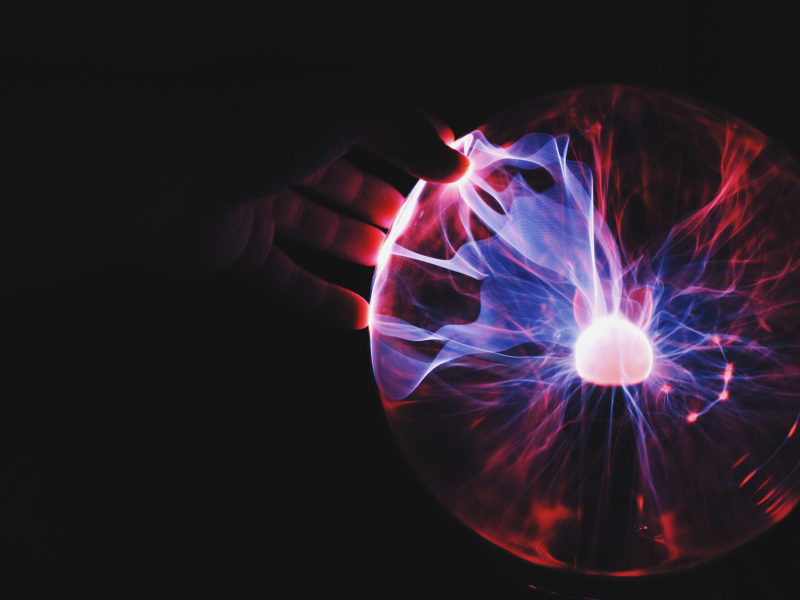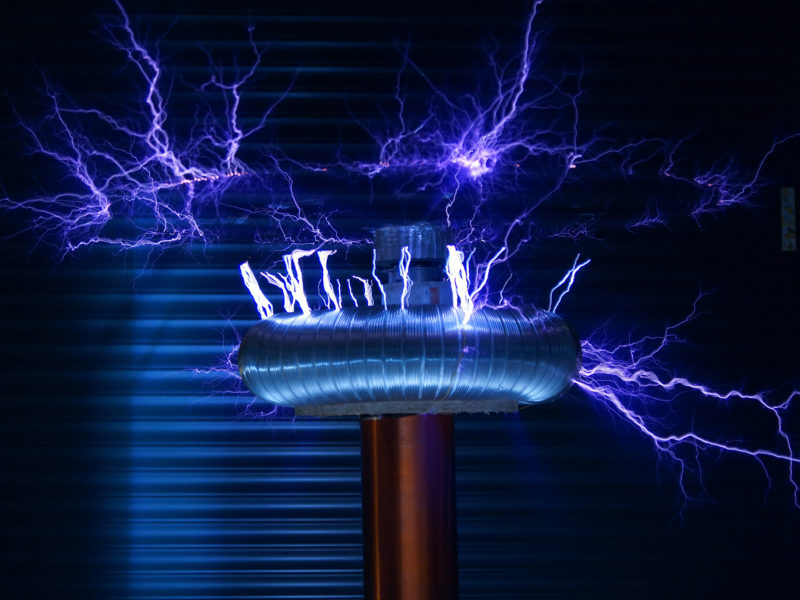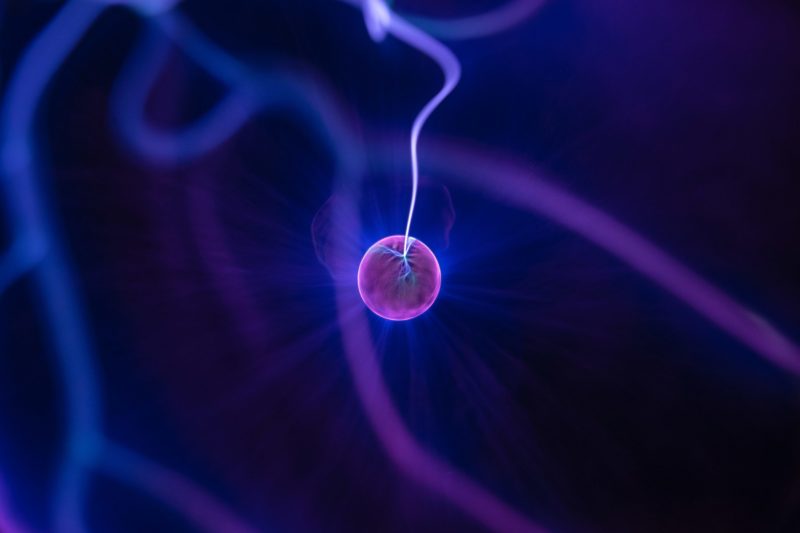Knowledge about electricity
The ancient Egyptians were familiar with electrostatic charge, but the first to try it was the Greek Thales of Miletus (635 – 546 BC). He found that amber (Greek ἤλεκτρον attracted small particles after rubbing it on wool. So the name electricity comes from amber. Today, many experts speculate about how static electricity can be avoided in our age, because almost everyone has experienced it that you get unpleasant, sometimes dangerous electric shocks, e.g. if you walk on a felt floor, touch the freezer in the supermarket and the pacemaker fails because of the electric shock.

What is electricity
Every matter consists of atoms in the most diverse or similar compounds, which are called molecules. An atom consists of a circle of electrons. An electron has the smallest negative electrical charge there is. However, the atomic nucleus consists of the same number of positive charges as the number of electrons orbiting around the atomic nucleus. These positive charges are called protons. The nucleus also has neutrons if it has multiple protons. Their job is to hold the protons together because otherwise the same electrical charges would repel each other. However, the neutrons have no electrical charge.
Therefore: The electrical forces in an atom or molecule with the same number of electrons and protons are electrically balanced, balance each other and are therefore electrically neutral.
But what happens if any matter has too little or too many electrons in the amount of its atoms or molecules? Quite simply: if there are too few electrons, it is electrically positively charged, but if there are too many electrons, it is electrically negative. Two bodies with a positive charge repel each other, the same applies to two bodies with a negative charge. But two bodies with opposite electrical charges attract each other, practically stick together.
If the electrons can move freely in a material, e.g. B. in iron or copper, then this material is called a conductor. Water e.g. is a pretty good conductor, but air is not a good conductor. A material in which the electrons can hardly or not move freely is called non-conductors or insulators. Plastic, amber, porcelain are good insulators.
WHAT IS STATIC ELECTRICITY?
Static electricity consists of charges (electrons) that sit on the surface of an insulating material. The number of these immobile electrons is called the electrical potential. Another material with a different potential is attracted to the first material. The potential difference is called electrical which is measured in volts. If you touch the first material with a conductor, the two potentials equalize. This compensation is called electricity. In this way, a person can be electrocuted. If the voltage is very high, even the air can conduct, even though the air is a poor conductor. We know this from a spark that strikes when he holds his hand close to a freezer in the supermarket, or from a lightning bolt during a thunderstorm.
The unequal number of electrons in two different substances with low conductivity results from static electricity and therefore occurs in many processes. It is created by working with a wide variety of materials, e.g. by contact between two materials or by separating the materials, for example by rolling them out. It can occur due to pressure on two different materials or due to friction.
Static electricity can also be generated during heating and cooling.
As already mentioned, mankind has known static electricity for more than two thousand years, but especially in our time it causes us problems due to the dry indoor climate and the use of plastic and other synthetic substances, because the different electrical charges of different substances can cause an electric shock. Again, it can hurt a lot or have serious consequences.
In processes where you work with various non-conductive materials, typically artificial substances, static electricity is common and therefore there is a risk of electric shock.
Many processes are unproblematic, but in some cases different static electricity can cause major production technology or occupational health problems.
Two differently electrically charged substances can inadvertently adhere or attract (e.g. dust) or two substances with the same electrical charge repel each other. The former can cause sparking, resulting inflammation or shock for the personnel, the latter can disrupt production.
THE CONDITIONS FOR THE APPLICATION OF STATIC ELECTRICITY DEPEND ON MANY FACTORS, FOR example:
1) THE MATERIAL
The less conductive (insulating) the material, the higher the risk of static electricity. Conversely, the more conductive the material, the less static electricity occurs.
2) THE PROCESSES
The greater the change in a material and the faster the change, the more static electricity is generated.
3) THE INDOOR CLIMATE
Humidity is very important: the lower the humidity, the greater the static electricity.
4) THE WEATHER
The humidity outside often also affects the indoor climate.
WHAT TO DO TO SOLVE THE PROBLEM
1) CHANGE PRODUCTION FORM
This can be difficult, but a possible solution would be to reduce or change the production speed.
2) CHANGE MATERIAL
More conductive material can be used, and a non-conductive material can be improved with, for example, conductive additives.
3) CHANGE CLIMATE
Humidity can be controlled more precisely and at a higher level, which results in better properties of the conductivity of the material and the air.
4) IMPROVE GROUNDING
You can ensure good grounding of all machine parts, sometimes with very high loads.
The material should be passively discharged with proper grounding.
5) ADD IONS TO THE AIR
A very effective method is to supply the air with ions of a suitable size.
This discharges the static electricity generated by the material.

WHAT ARE ANTISTATIC PRODUCTS
Antistatic products are products that do not charge static electricity, i.e. are conductive. The range includes clothing, shoes, floors, packaging, tools and so on. A typical antistatic product is plastic bags for electronics.
Electronic components are very susceptible to static charges. There is a risk of their destruction in a normal plastic bag. Therefore, bags with additives that have conductive properties are used for such components so that no static electricity occurs. These bags are called antistatic bags.

WHAT POSSIBILITIES ARE FOR NEUTRALIZATION?
An assembly line causes problems with the placement of objects that are static electrical and therefore cannot be placed correctly. Solution to this problem: An ion blower that allows easy ionization in a larger area.
A manufacturer of very large glass fiber parts has problems with static-electrical charges in production. This leads to severe electric shocks for the operator, which can be harmful to health. Solution: An LR ion rod in combination with a tangential blower that is brought to the workplace and covers the area of 1 – 6 m. The effect depends on the distance.

WHAT IS AN ION?
The word ion comes from the Greek and actually means “to wander”, but is used in the meaning: positive or negative electrically charged atom, molecule or particle. Positively charged ions are atoms or molecules from which an electron (or several electrons) has detached itself.

